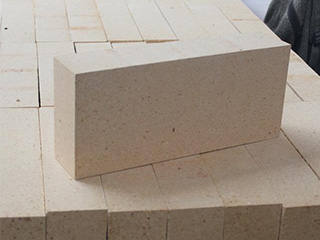High alumina brick lining is a popular choice for industrial applications because of its excellent chemical resistance and high-temperature performance. It is often used to line furnaces, kilns, reactors, and other high-temperature equipment in industries such as steel, cement, and chemical manufacturing.

Installing and maintaining high alumina brick lining requires proper planning, preparation, and execution. In this article, we will discuss the steps involved in installing and maintaining high alumina brick lining in industrial applications.
1.Planning and Preparation:
The first step in installing and maintaining high alumina brick lining is to plan the project thoroughly. This involves identifying the areas where the lining will be installed, determining the type and size of bricks required, and calculating the total number of bricks needed.
Once the planning is complete, the next step is to prepare the surface where the lining will be installed. This involves cleaning the surface of any debris, rust, or other contaminants that may interfere with the adhesion of the bricks. The surface should be smooth and free of any irregularities.
2.Installation:
The next step is to install the high alumina brick lining. This involves placing the bricks in the desired pattern and bonding them to the surface using a suitable refractory mortar. The mortar should be applied evenly and generously between the bricks to ensure a strong bond.
It is important to ensure that the bricks are properly aligned and leveled during installation. Any misalignment or unevenness in the bricks can lead to gaps or cracks in the lining, which can compromise its integrity.
3.Curing:
After the high alumina brick lining is installed, it needs to be cured to ensure that the mortar sets properly. Curing involves exposing the lining to gradually increasing temperatures over a period of time. This allows the mortar to harden and bond the bricks together.
The curing process should be carefully controlled to prevent thermal shock or other stresses that can cause the lining to crack or fail. The temperature should be increased gradually and the lining should be allowed to cool slowly after each heating cycle.
4.Maintenance:
Once the high alumina brick lining is installed and cured, it is important to maintain it properly to ensure its long-term performance. This involves regular inspections and repairs as needed to address any damage or wear to the lining.
In addition, it is important to take steps to prevent damage to the lining from excessive heat, chemical exposure, or other factors. This may involve installing protective coatings or barriers, adjusting operating conditions, or implementing other measures to reduce stress on the lining.
Conclusion:
Installing and maintaining high alumina brick lining in industrial applications requires careful planning, preparation, and execution. By following these steps and taking appropriate measures to maintain the lining, it is possible to achieve long-term performance and durability in high-temperature environments.
Contact: Mgr. Han
Phone: 0086-13589497465
Email: 1255953279@qq.com
Add: Industrial Area of Lingzi Town,Zichuan District,Zibo City, Shandong,China